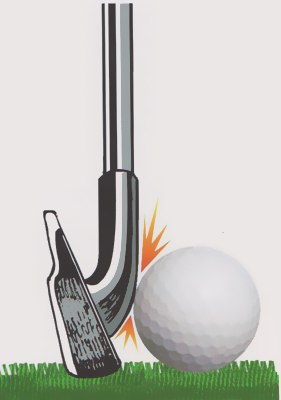Shanks have your students down?
 “Hosel rockets.” “The laterals.” “The S-word.” It seems golfers will go to great lengths to avoid saying perhaps the most dreaded word in golf: “shank.”
“Hosel rockets.” “The laterals.” “The S-word.” It seems golfers will go to great lengths to avoid saying perhaps the most dreaded word in golf: “shank.”
Okay, I can hear some of you now. “Thanks a lot, Harman. You’re right. I don’t want to hear the word, or even see the word, and here you are, writing a whole column about it!”
Unfortunately, shanking is a malady that we, as golf teachers, must deal with. Shanking can be very difficult for the student to overcome, and also very difficult for the teacher to come up with an effective cure for a particular student. This is because there is a variety of reasons why golfers shank, and therefore no “one size fits all” approach.
The reason could be purely mechanical – the player has a poor swing path or wide-open clubface angle. The reason could be psychological, or possibly even neurological!
Research at the Mayo Clinic suggests the “yips” in putting may be the result of focal dystonia, a neurological disorder. The yips are not exclusive to putting, though. Golfers who yip their pitch shots or iron shots often have it manifested in shanking.
Let’s initially address the mechanical reasons. Often, shanking occurs because the swing path is incorrect. It can be either too much outside-in (common to higher handicappers), or too much inside-out (common to lower handicappers). Of course, the cure here is simple: correct the swing path. An effective drill might include placing a box parallel to the target line, just outside the ball. This will force the golfer to swing with a proper path if he doesn’t want to hit the box. (Some teachers will use a 2×4 for this drill, but in our litigious society nowadays, I don’t recommend it – even if you do have our USGTF liability insurance.)
Some golfers will shank simply because they are contacting the ball incorrectly, even though the clubface is square. A couple of reasons for this come to mind: the golfer might have his weight too much on his toes at impact, or he might be standing too close to the ball. Cures for these problems are self-evident.
It’s also possible that the golfer’s perception of what he is doing doesn’t match reality. In other words, he might think he should be contacting the ball on the club’s sweet spot, but instead is hitting the hosel. The cure is to feel as if contact is being made towards the toe of the club. Even though it feels like the ball is being struck there, an examination of the grass spot on the clubface will often reveal a sweet-spot strike. Here, it’s just a matter of getting perception and reality to match. (Please see my article, “Perception vs. Reality,” Golf Teaching Pro, Winter 2002.)
Good golfers tend to occasionally shank their pitch shots, because they’ve been beaten to death about “taking your hands out of the swing.” The result is no release on these pitch shots, and of course the clubface will be wide open at impact, with the hosel leading into the ball. Let these students know that there is no crime in using the hands somewhat on pitch shots – in fact, it’s necessary.
Okay, we’ve come to that most difficult part – addressing the psychological reasons. Here, I believe the golfer has such a lack of confidence that he freezes up during the stroke, restricting his hands and preventing the club from doing what it was designed to do. An effective drill I hit upon some time ago involves having the student take two continuous practice swings, and then, on the third swing, step into the ball and hit it with the same motion. This helps to take some conscious thought out of the process, and of course, mechanically it allows the student to release the club. In using this drill to correct full-swing shanks, make sure the ball is teed up. If you use this drill to correct pitch-shot shanks, leave the ball on the ground, but in a good lie.
Shanking is not the easiest problem to overcome, but it can be defeated. Your most difficult job is to figure out whether the root cause is mechanical or psychological, and adjust your teaching accordingly.




